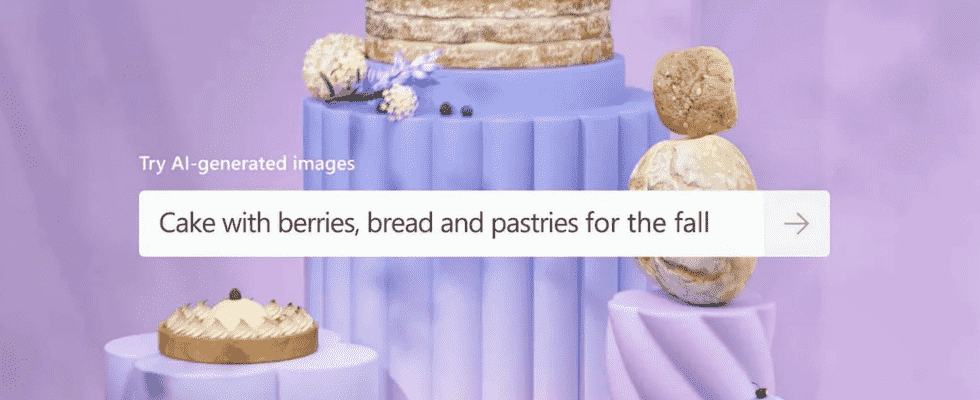Microsoft has just announced the arrival of a new graphic creation tool powered by DALL-E AI. Called Microsoft Designer, it generates visual content through a simple description. Magical !
The world of graphic design can prepare to welcome a new tool: Microsoft Designer. Those familiar with the Canva platform, which allows you to create fairly elaborate visuals and flyers in a few clicks, will probably be interested in Designer. Microsoft took advantage of its Surface Event 2022 to announce his arrival and show how it works. This new application integrated into Microsoft 365 is based on art-generating artificial intelligence (AI), the same as for DALL-E – which is not surprising given that the Redmond firm has invested a billion dollars in OpenAI , the company behind the image generator. The principle is very similar: just enter keywords in a search bar to instantly create a variety of designs, which can then be used to make invitations, cards, social media posts or flyers, without necessarily having knowledge of the subject. A tool that promises to be very practical, but which raises some controversy.
Microsoft Designer: graphic content created from a simple description
On the program, therefore, a graphic design tool straddling PowerPoint and Publisher which allows you to design posters, invitation cards, flyers and other graphic creations to print or share on social networks. To create content with Microsoft Designer, all you have to do is describe what you have in mind for the AI to generate unique content. You can of course adjust the rendering afterwards with other keywords, but also, of course, add text, choose the color and size of the image. The result obtained can then be exported locally or published on social networks. The tool will be accessible as a free application, but also as a more feature-rich version for users of the Microsoft 365 suite. For the moment, Microsoft Designer is only available in a limited web versionaccessible by registration in the queue – Microsoft plans to gradually open its access.
The Redmond firm plans to soon integrate Microsoft Designer into its Bing search engine and into Microsoft Edge via a tool called Bing Image Creator. Again, it will suffice to enter the keywords describing the desired result for the AI to generate the image, so that “you can use your words not only to research, but also to create”. In any case, it remains to be seen whether Designer will be powerful enough to overshadow the Canva service which, even in its free version, allows you to create beautiful illustrations – as we explain in our practical sheet – or stories for Instagram for example.
AI Image Generation: Controversial Tools
If image-generating AIs are on the rise, many people fear drifts. Microsoft wants to be reassuring and assures that OpenAI has filtered “the explicit sexual and violent content of the data set used to train the model” and that he has “deployed filters to limit the generation of images that violate the content policy”. The company has also set up “an additional blocking of requests on sensitive subjects”. Such measures are necessary since DALL-E’s AI – which is the same – tended to have stereotypical and racist results, since it feeds on royalty-free images available on the Internet and paintings that have been created in a society that itself harbored stereotypes and racism – as a result, many wealthy white men were represented.
Image-generating AIs also raise many ethical issues, particularly in terms of copyright and the essence of art. Who is the author of the created image? The AI or the user? Can an AI be recognized as an author? And, more generally, can an AI be considered the creator of a work? Concrete cases have already posed a problem. In August, a table generated by Midjourney – a similar tool – won an art competition in the United States, sparking controversy. Another example: an American artist named Kris Kashtanova obtained copyright registration for her graphic novel. However, if she wrote the story and organized the scenography, it was also Midjourney who generated the illustrations via the descriptions of the American. The question is far from settled…
